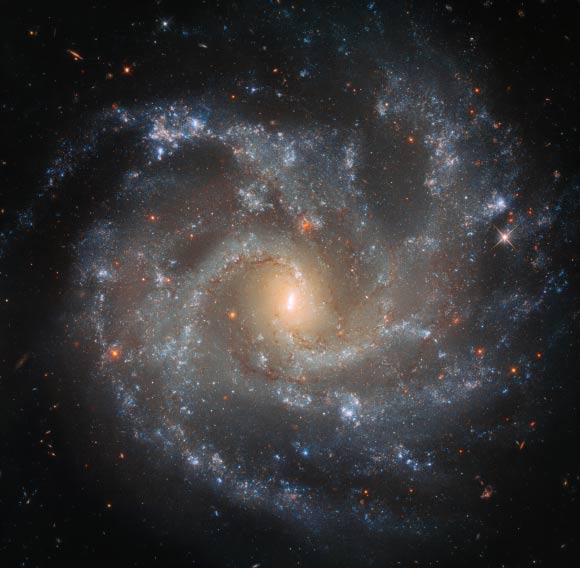Hubble Space Telescope Observes NGC 5468 | Astronomy – Sci-News.com
The NASA/ESA Hubble Space Telescope has produced a spectacularly detailed image of a spiral galaxy called NGC 5468.

This Hubble image shows the face-on spiral galaxy NGC 5468. The color image was made from separate exposures taken in the visible and infrared regions of the spectrum with Hubble’s Wide Field Camera 3 (WFC3). Four filters were used to sample various wavelengths. The color results from assigning different hues to each monochromatic image associated with an individual filter. Image credit: NASA / ESA / Hubble / W. Li et al / Judy Schmidt, www.geckzilla.com.
NGC 5468 is a face-on spiral galaxy some 142 million light-years away in the constellation Virgo.
Also known as LEDA 50323 or UGCA 384, the galaxy was discovered by the German-born British astronomer William Herschel on March 5, 1785.
NGC 5468 is approximately 110,000 light-years across, about the size of our Milky Way Galaxy.
It belongs to the NGC 5493 galaxy group, which also includes spiral galaxies NGC 5493 and NGC 5476, and an interacting pair of galaxies known as Arp 271 (NGC 5426 and NGC 5427).
Five supernovae explosions have been discovered in NGC 5468: SN 1999cp, SN 2002cr, SN 2002ed, SN 2005P, and SN 2018dfg.
“Supernovae mainly occur in a couple of ways: either a massive star depletes its fuel at the end of its life, become dynamically unstable and unable to support its bulk, collapses inwards, and then violently explodes,” the Hubble astronomers said.
“Or a white dwarf in an orbiting stellar couple syphons more mass off its companion than it is able to support, igniting runaway nuclear fusion in its core and beginning the supernova process.”
“Both types result in an intensely bright object in the sky that can rival the light of a whole galaxy.”
“In the last 20 years, NGC 5468 has hosted a number of observed supernovae of both the aforementioned types.”
“The orientation of NGC 5468 with respect to us makes it easier to spot these new ‘stars’ as they appear,” they explained.
“We see NGC 5468 face on, meaning we can see the galaxy’s loose, open spiral pattern in beautiful detail in images such as this one from Hubble.”






